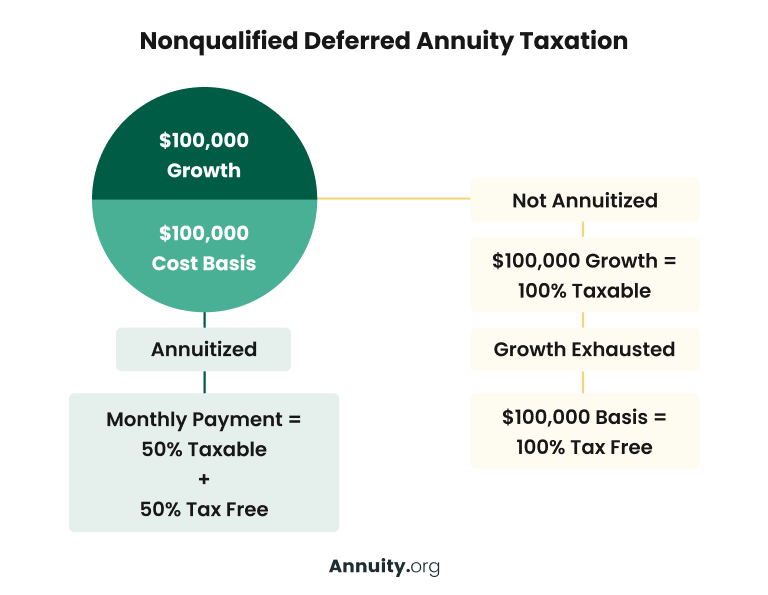All Categories
Featured
Table of Contents

Comprehending the different survivor benefit alternatives within your acquired annuity is essential. Carefully review the agreement details or consult with an economic expert to determine the certain terms and the very best method to proceed with your inheritance. Once you inherit an annuity, you have several choices for getting the cash.
In some situations, you may be able to roll the annuity right into a special kind of specific retired life account (IRA). You can pick to obtain the entire continuing to be equilibrium of the annuity in a single settlement. This choice provides immediate access to the funds however features major tax obligation effects.

If the inherited annuity is a certified annuity (that is, it's held within a tax-advantaged retired life account), you might be able to roll it over right into a brand-new retired life account (Annuity withdrawal options). You do not need to pay tax obligations on the rolled over amount.
Tax on Structured Annuities death benefits for beneficiaries
While you can not make added contributions to the account, an acquired IRA supplies a beneficial benefit: Tax-deferred growth. When you do take withdrawals, you'll report annuity earnings in the very same method the plan individual would certainly have reported it, according to the IRS.
This choice offers a stable stream of earnings, which can be useful for long-lasting monetary preparation. Normally, you must start taking circulations no extra than one year after the owner's death.

As a beneficiary, you will not be subject to the 10 percent internal revenue service early withdrawal fine if you're under age 59. Attempting to calculate taxes on an inherited annuity can really feel complicated, yet the core concept focuses on whether the contributed funds were formerly taxed.: These annuities are moneyed with after-tax bucks, so the recipient normally does not owe tax obligations on the original payments, but any type of earnings built up within the account that are distributed go through ordinary income tax.
Annuity Rates and beneficiary tax considerations
There are exemptions for partners that inherit certified annuities. They can normally roll the funds into their very own IRA and defer taxes on future withdrawals. In any case, at the end of the year the annuity business will certainly file a Type 1099-R that shows exactly how a lot, if any kind of, of that tax year's circulation is taxed.
These taxes target the deceased's overall estate, not simply the annuity. These taxes commonly just effect really huge estates, so for many heirs, the emphasis ought to be on the income tax implications of the annuity.
Annuity Cash Value inheritance taxation
Tax Obligation Therapy Upon Death The tax obligation treatment of an annuity's fatality and survivor benefits is can be quite made complex. Upon a contractholder's (or annuitant's) fatality, the annuity might undergo both revenue taxation and inheritance tax. There are various tax treatments depending on who the beneficiary is, whether the proprietor annuitized the account, the payment approach chosen by the beneficiary, etc.
Estate Taxes The government estate tax obligation is a highly modern tax (there are many tax brackets, each with a higher price) with prices as high as 55% for huge estates. Upon fatality, the IRS will consist of all residential property over which the decedent had control at the time of fatality.
Any type of tax in extra of the unified credit is due and payable nine months after the decedent's death. The unified debt will fully shelter fairly modest estates from this tax. For many customers, estate taxation may not be a crucial concern. For larger estates, however, estate tax obligations can enforce a large worry.
This discussion will focus on the estate tax treatment of annuities. As was the situation throughout the contractholder's life time, the internal revenue service makes an essential difference between annuities held by a decedent that remain in the buildup phase and those that have entered the annuity (or payment) stage. If the annuity remains in the build-up stage, i.e., the decedent has actually not yet annuitized the agreement; the full survivor benefit guaranteed by the agreement (consisting of any boosted death benefits) will be consisted of in the taxed estate.
Inherited Annuity Income Riders taxation rules
Example 1: Dorothy had a fixed annuity agreement issued by ABC Annuity Business at the time of her death. When she annuitized the agreement twelve years earlier, she picked a life annuity with 15-year period certain. The annuity has been paying her $1,200 monthly. Because the agreement guarantees repayments for a minimum of 15 years, this leaves 3 years of settlements to be made to her son, Ron, her designated beneficiary (Structured annuities).

That worth will certainly be consisted of in Dorothy's estate for tax obligation functions. Upon her fatality, the payments quit-- there is absolutely nothing to be paid to Ron, so there is absolutely nothing to consist of in her estate.
2 years ago he annuitized the account choosing a lifetime with cash refund payout option, calling his little girl Cindy as recipient. At the time of his fatality, there was $40,000 primary remaining in the agreement. XYZ will certainly pay Cindy the $40,000 and Ed's administrator will certainly consist of that quantity on Ed's estate tax return.
Since Geraldine and Miles were wed, the benefits payable to Geraldine stand for home passing to a making it through partner. Guaranteed annuities. The estate will certainly be able to utilize the unrestricted marriage deduction to avoid tax of these annuity advantages (the worth of the benefits will be listed on the inheritance tax kind, together with a balancing out marital reduction)
Retirement Annuities inheritance tax rules
In this case, Miles' estate would include the worth of the remaining annuity settlements, but there would certainly be no marriage deduction to offset that addition. The exact same would use if this were Gerald and Miles, a same-sex couple. Please note that the annuity's staying worth is identified at the time of death.

Annuity agreements can be either "annuitant-driven" or "owner-driven". These terms refer to whose fatality will trigger settlement of survivor benefit. if the agreement pays survivor benefit upon the fatality of the annuitant, it is an annuitant-driven agreement. If the death benefit is payable upon the death of the contractholder, it is an owner-driven agreement.
There are scenarios in which one person possesses the contract, and the gauging life (the annuitant) is a person else. It would be great to believe that a particular agreement is either owner-driven or annuitant-driven, but it is not that straightforward. All annuity agreements issued given that January 18, 1985 are owner-driven due to the fact that no annuity contracts provided ever since will certainly be given tax-deferred status unless it includes language that triggers a payment upon the contractholder's fatality.
Table of Contents
Latest Posts
Exploring the Basics of Retirement Options A Comprehensive Guide to Investment Choices What Is Fixed Vs Variable Annuity Pros Cons? Features of Smart Investment Choices Why Choosing the Right Financia
Decoding Fixed Vs Variable Annuity Pros Cons Everything You Need to Know About Fixed Vs Variable Annuities Defining the Right Financial Strategy Pros and Cons of Various Financial Options Why Pros And
Analyzing Pros And Cons Of Fixed Annuity And Variable Annuity Key Insights on Your Financial Future Defining Variable Annuity Vs Fixed Indexed Annuity Features of Smart Investment Choices Why Choosing
More
Latest Posts